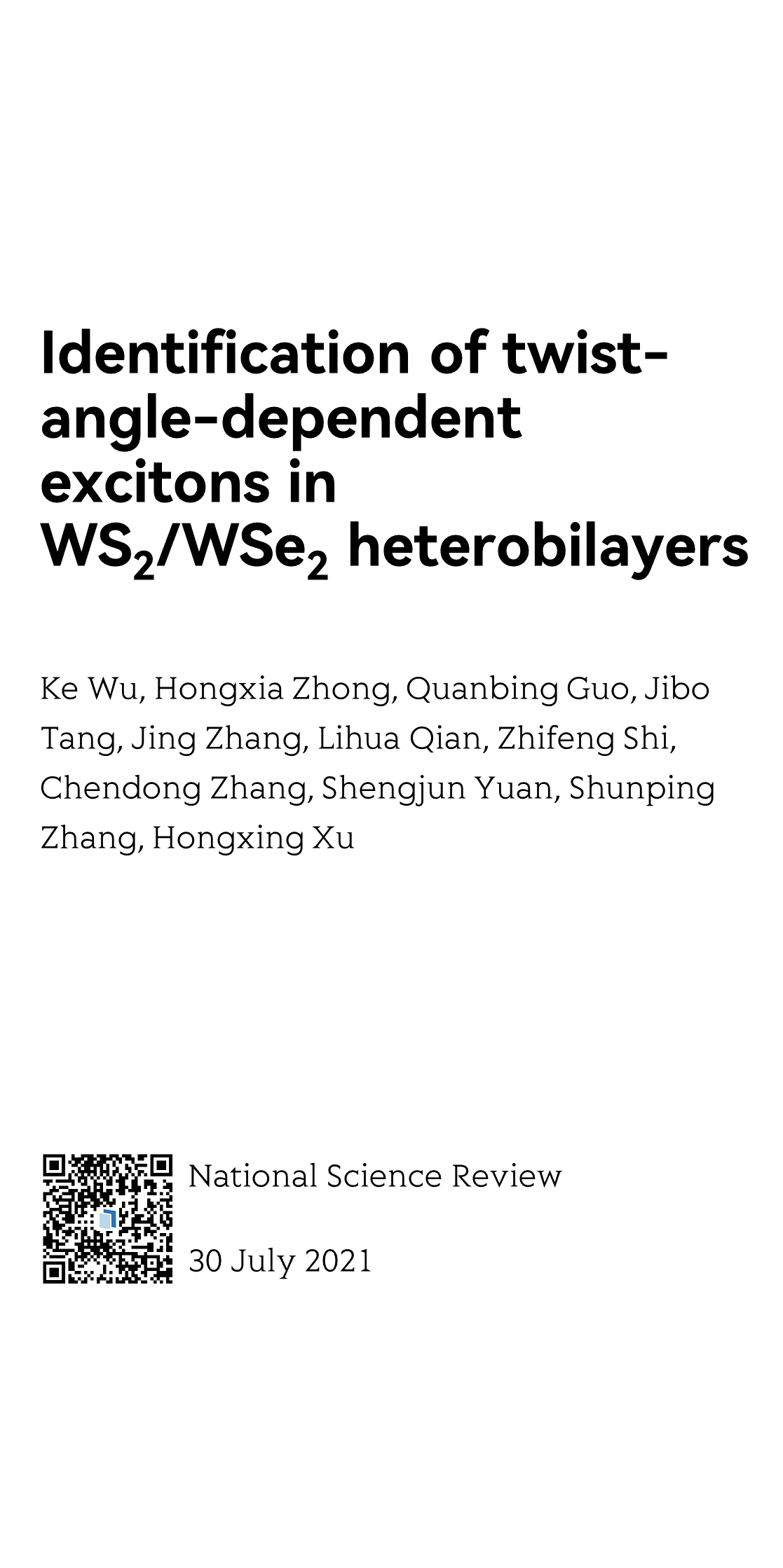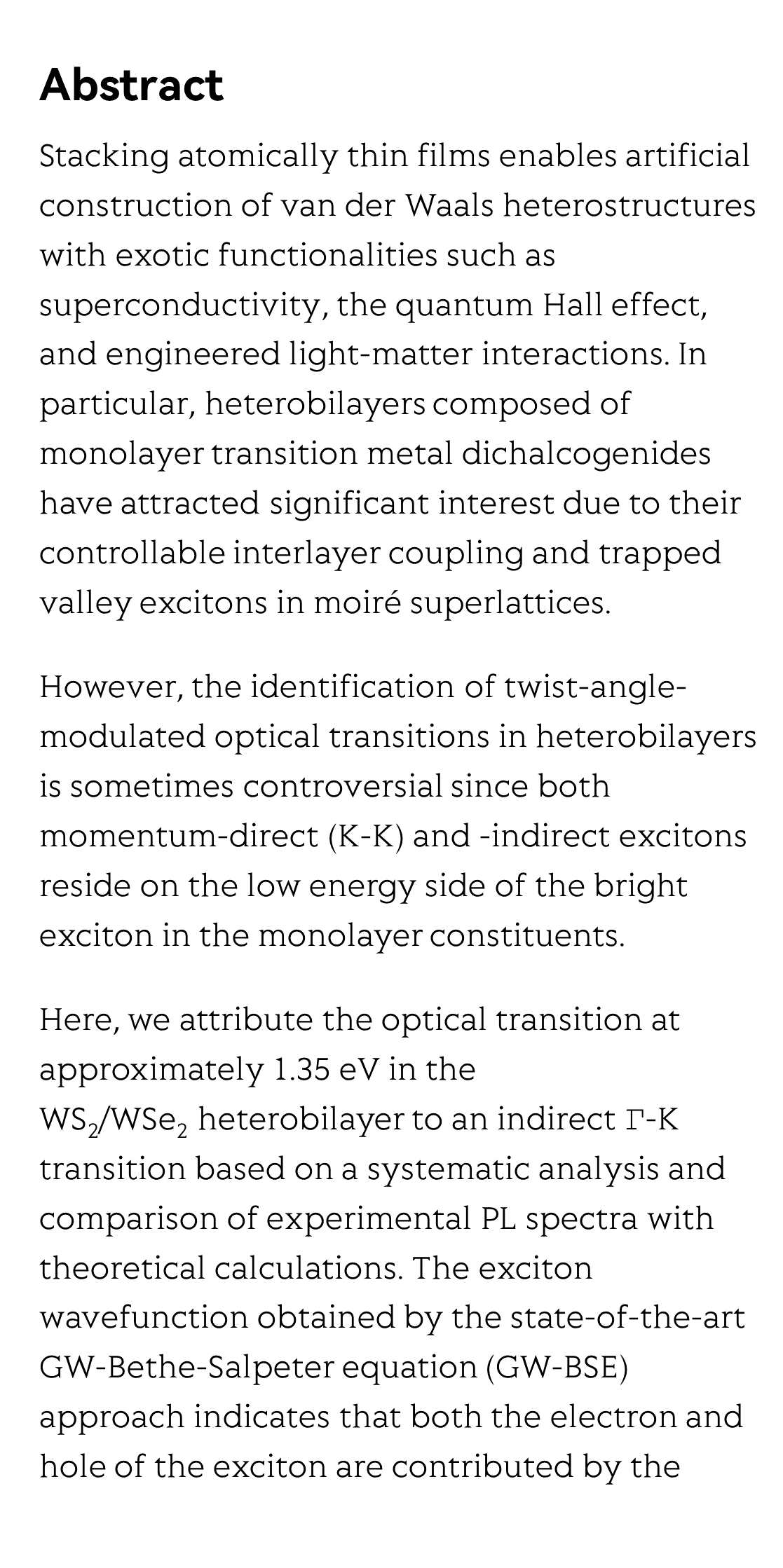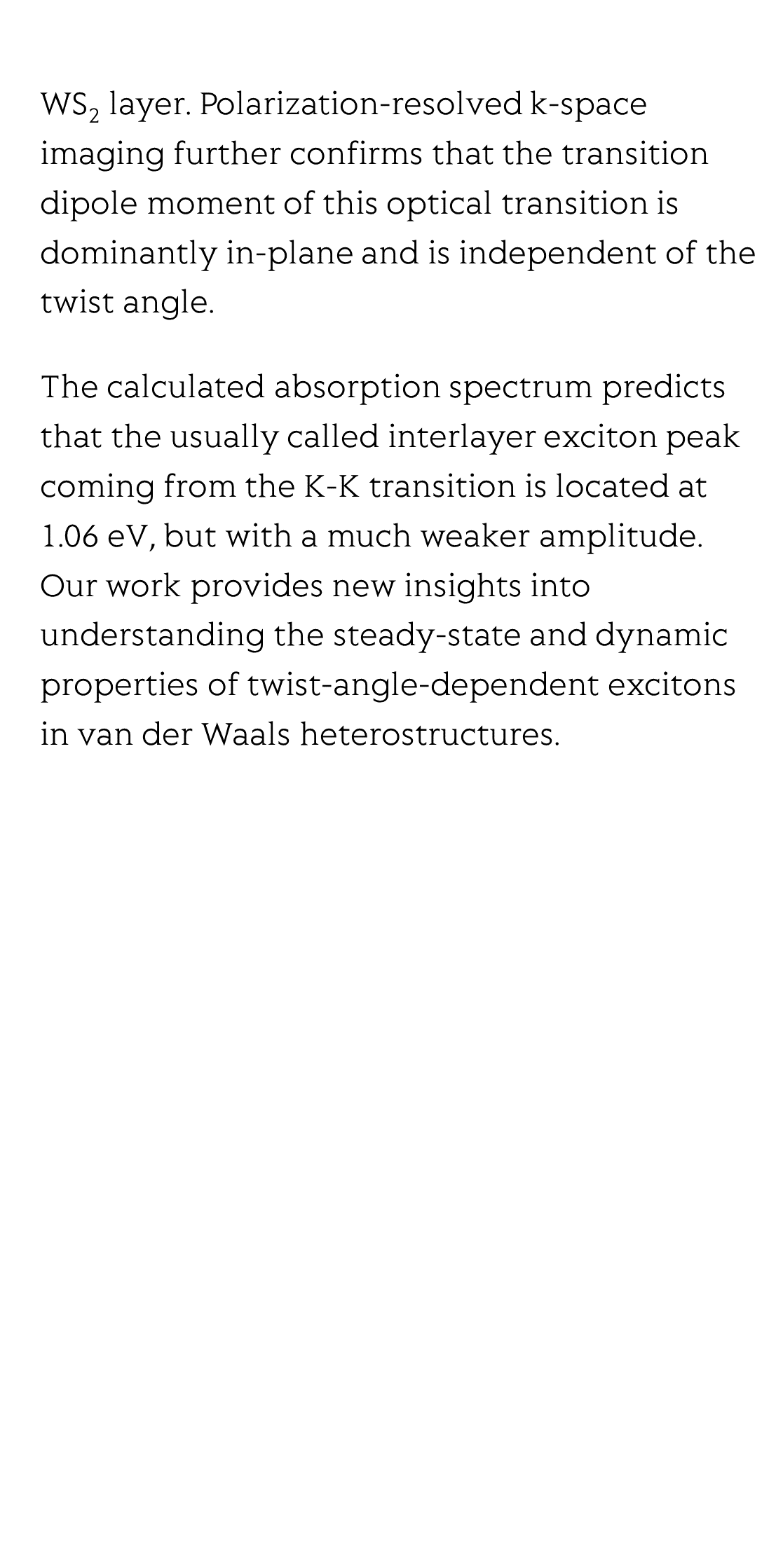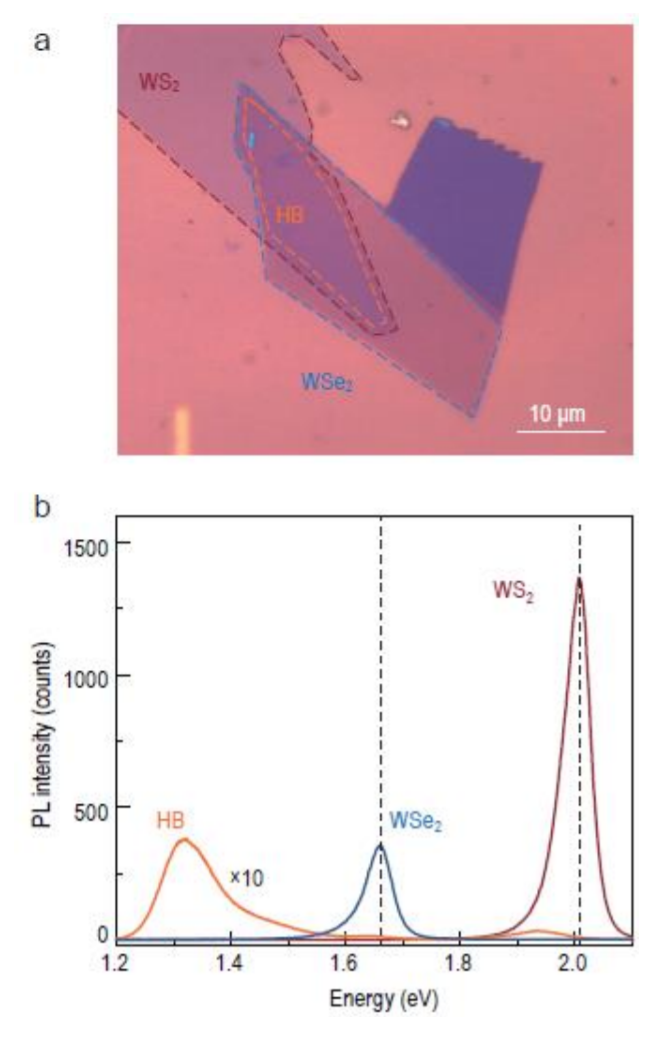(Peer-Reviewed) Identification of twist-angle-dependent excitons in WS₂/WSe₂ heterobilayers
Ke Wu ¹ ², Hongxia Zhong ¹, Quanbing Guo ¹, Jibo Tang ³, Jing Zhang ¹, Lihua Qian 钱立华 ², Zhifeng Shi 史志锋 ⁴, Chendong Zhang 张晨栋 ¹, Shengjun Yuan 袁声军 ¹, Shunping Zhang 张顺平 ¹, Hongxing Xu 徐红星 ¹ ³
¹ School of Physics and Technology and Key Laboratory of Artificial Micro- and Nano-structures of Ministry of Education, Wuhan University, Wuhan 430072, China; 武汉大学 物理科学与技术学院 人工微结构教育部重点实验室
² School of Physics, Huazhong University of Science and Technology, Wuhan 430074, China; 华中科技大学 物理学院
³ The Institute for Advanced Studies, Wuhan University, Wuhan 430072, China; 武汉大学 高等研究院
⁴ Key Laboratory of Materials Physics of Ministry of Education, School of Physics and Microelectronics, Zhengzhou University, Zhengzhou 450052, China 郑州大学 物理学院(微电子学院)材料物理教育部重点实验室
National Science Review
, 2021-07-30
Abstract
Stacking atomically thin films enables artificial construction of van der Waals heterostructures with exotic functionalities such as superconductivity, the quantum Hall effect, and engineered light-matter interactions. In particular, heterobilayers composed of monolayer transition metal dichalcogenides have attracted significant interest due to their controllable interlayer coupling and trapped valley excitons in moiré superlattices.
However, the identification of twist-angle-modulated optical transitions in heterobilayers is sometimes controversial since both momentum-direct (K-K) and -indirect excitons reside on the low energy side of the bright exciton in the monolayer constituents.
Here, we attribute the optical transition at approximately 1.35 eV in the WS₂/WSe₂ heterobilayer to an indirect Γ-K transition based on a systematic analysis and comparison of experimental PL spectra with theoretical calculations. The exciton wavefunction obtained by the state-of-the-art GW-Bethe-Salpeter equation (GW-BSE) approach indicates that both the electron and hole of the exciton are contributed by the WS₂ layer. Polarization-resolved k-space imaging further confirms that the transition dipole moment of this optical transition is dominantly in-plane and is independent of the twist angle.
The calculated absorption spectrum predicts that the usually called interlayer exciton peak coming from the K-K transition is located at 1.06 eV, but with a much weaker amplitude. Our work provides new insights into understanding the steady-state and dynamic properties of twist-angle-dependent excitons in van der Waals heterostructures.
Flicker minimization in power-saving displays enabled by measurement of difference in flexoelectric coefficients and displacement-current in positive dielectric anisotropy liquid crystals
Junho Jung, HaYoung Jung, GyuRi Choi, HanByeol Park, Sun-Mi Park, Ki-Sun Kwon, Heui-Seok Jin, Dong-Jin Lee, Hoon Jeong, JeongKi Park, Byeong Koo Kim, Seung Hee Lee, MinSu Kim
Opto-Electronic Advances
2025-09-25
Dual-frequency angular-multiplexed fringe projection profilometry with deep learning: breaking hardware limits for ultra-high-speed 3D imaging
Wenwu Chen, Yifan Liu, Shijie Feng, Wei Yin, Jiaming Qian, Yixuan Li, Hang Zhang, Maciej Trusiak, Malgorzata Kujawinska, Qian Chen, Chao Zuo
Opto-Electronic Advances
2025-09-25







